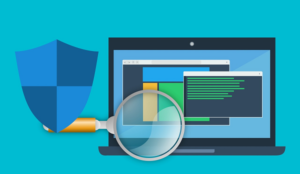
If you’re going to digitize your paper documents, here are the steps you need to follow.
Your business works with all kinds of documents every day. When documents are handled manually, it increases the risk of human error or documents getting lost. Many documents hold sensitive and confidential information, and the information in those documents needs to be kept safe at all costs. To minimize these risks, many people are choosing to digitize their documents. With document scanning technology, businesses can be more efficient and reduce human error by a considerable margin. If you’re going to digitize your paper documents, here are the steps you need to follow.
Inventory Your Current Documents
Find out what documents you currently have, as well as where you can find them. Consider which documents get completed by clients and which are finished by employees. When you make a list, you’ll be able to weave your current documents into the plan and understand which kinds of documents you usually make and use.
Figure Out Which Documents Need to Be Scanned
Some businesses may want to digitize completely and be left with no paper documents. However, we suggest a transitional stage, one in which only certain documents will be digitized at a time. The documents you should digitize first are often the ones that bring in the most errors.
Establish a Document Scanning Process
Figure out which stage of the process should be allocated to scanning documents, and figure out who will be the one to scan them. Write out the workflow process and identify any areas of inefficiency that can be addressed before you start the process. If you create a streamlined process that’s suitable for your business, you’ll become more efficient without having to overcome a large learning curve.
Determining an Effective Document Storage Stratagem
When you digitize your documents, you won’t use cabinets to store them anymore. Instead, they will be stored in the cloud. Figure out a system that keeps your business organized. You should be able to locate and organize documents with little trouble. Once you settle on a system that works, your business’s productivity will go up significantly.
Create an Access Policy for Your Documents
Go over the different kinds of documents you have and figure out which people need to access which documents. You should be able to get help creating your access policy from your IT department. Controlling who can access certain documents will heighten the security of your business, and it will lower liability if theft or breaching were to ever be a concern.
Write a Document Management Plan
People might be tempted to avoid creating a document management plan. However, this is an integral step because creating a plan, and having a written policy will heighten your chances of getting the most out of your document scanning software. The ones documenting the new process should be the ones who will be affected the most by the new system. Different team members should then review the process.
Implement the New Plan
Get your new plan rolling by incrementally phasing it into your business. There should be a clear date for when the new process starts. All staff members should be trained and informed on all of the concerns about transitioning to this new process. People may be skeptical at first, but you should let them know that they will be more efficient in the future because of these changes. After you’ve introduced the new process, review it, and make changes as needed. You should speak with your staff about what works well and what needs improving. Then, you can update your process to accommodate for any concerns people had.
Have Questions? Micro Records is Here to Help
If you have more questions about document management software, Micro Records is here to help you with all of your needs. We can be of assistance transitioning your business to a paperless way of life with outstanding e-forms and technology. For more information about how we can help you implement your new document management software, visit us online, or give us a call at 877-410-SCAN. For more tips, tricks, and to see what we have been working on, be sure to follow us on Facebook, Twitter, LinkedIn, and YouTube.
